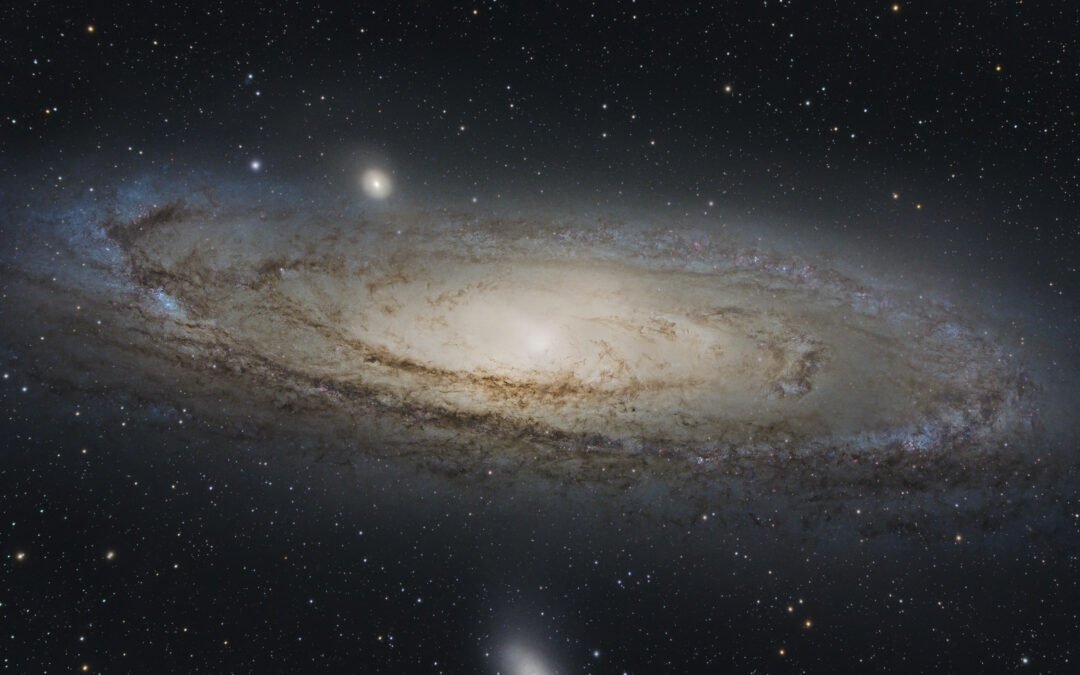While working on my deep image of nebulae in the M33 galaxy, I spent a few hours imaging the famous Andromeda Galaxy. The image above is the result of combining just 84 frames of 300-second exposures each, resulting in 7 hours of total exposure time.
The Andromeda Galaxy is the closest galaxy to us and lies 2.5 million light-years away in the constellation of Andromeda. It is home to around one trillion stars, and as you read this text, it is hurtling toward our Milky Way galaxy at about 110 kilometers per second. In a few billion years, these two galaxies will collide and form a larger structure that will more likely become an elliptical galaxy.
I have taken a few images of this galaxy, and in this latest version, I decided to process the stars in the image a little differently. In particular, I reduced the brightness of stars within the view of Andromeda, which brought the galaxy itself into the foreground. Although it is just 7 hours of total integration time, I am quite happy with the acquired result.
Gear I used to capture this image:
Telescope: SvBony SV550 122mm Triplet APO F/5.6
Camera: ZWO ASI2600MC Pro
Mount: Sky-Watcher EQ6-R Pro
Filter: Optolong UV/IR cut 2″
Guiding Telescope: Orion 50mm Mini Guide scope
Guiding Camera: SvBony SV305
Acquisition details: 84 x 300″ (7 hours of total exposure time)
The high-resolution version of this image with more acquisition details is available on AstroBin. Just click on the image below:


